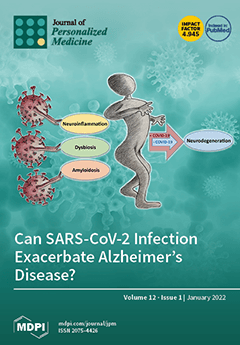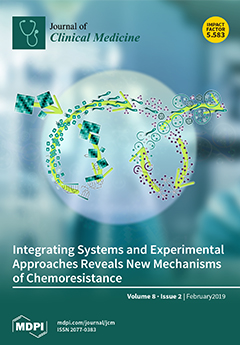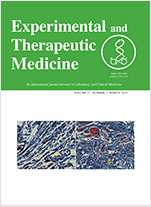HPV
How to submit an article:
- Registered users can submit any published journal article that has a unique DOI (Digital Object Identifier) name or link to Research Hub.
- For example, you can paste the full DOI link:
https://doi.org/10.1109/5.771073or just the DOI name:10.1109/5.771073into the field above and click submit. - The person who is first to submit a valid article to Research Hub will forever be credited for it, and every article submission earns you +6 Research Points.
Human Papillomavirus (HPV) is a sexually transmitted virus that can cause various types of genital warts and certain types of cancer, including cervical cancer.
Also known as: Human Papillomavirus
Published research studies are articles that present the findings of original research that has undergone a peer-review process and has been made publicly available in scholarly journals, books or other media.

The Association of Four Natural Molecules—EGCG, Folic Acid, Vitamin B12, and HA—To Counteract HPV Cervical Lesions: A Case Report
2023 Mar 22 Journal of Personalized Medicine Grandi G, Botticelli L, Fraia PD, Babalini C, Masini M, Unfer V
Case Report Hyaluronic Acid Vitamin B12 Cervical Cancer HA Folic Acid Cervical Dysplasia Green Tea EGCG HPVThe combination of epigallocatechin gallate, vitamin B12, folic acid, and hyaluronic acid could effectively counter precancerous lesions of the uterine cervix caused by HPV infections.

Evaluating the Efficacy of Pervistop®, a New Combination Based on EGCG, Folic Acid, Vitamin B12 and Hyaluronic Acid on Patients with Human Papilloma Virus (HPV) Persistent Infections and Cervical Lesions: A Pilot Study
2023 Mar 10 Journal of Clinical Medicine Aragona C, Bezerra Espinola MS, Bilotta G, Porcaro G, Calcagno M
Randomised Controlled Trial HPV Folic Acid EGCGA combination of epigallocatechin gallate, folic acid, vitamin B12, and hyaluronic acid may effectively clear HPV infections and cervical lesions in women.

Applications of a Standardized Green Tea Catechin Preparation for Viral Warts and Human Papilloma Virus-Related and Unrelated Cancers
2020 Jun 02 Molecules Miyoshi N, Tanabe H, Suzuki T, Saeki K, Hara Y
The study concludes that PSV, a standardized GTC preparation, has demonstrated positive efficacy in treating anogenital warts and shows potential effectiveness in other HPV-related diseases through apoptosis induction and the downregulation of inflammation.
Clinical Study Cancer HPV
Epigallocatechin gallate inhibits cell growth and regulates miRNA expression in cervical carcinoma cell lines infected with different high‑risk human papillomavirus subtypes
2018 Dec 24 Experimental and Therapeutic Medicine Zhu Y, Huang Y, Liu M, Yan Q, Zhao W, Yang P, et al.
Green Tea HPVThe polyphenol epigallocatechin-3-gallate (EGCG) inhibits the growth of cervical carcinoma cell lines potentially by altering the expression of micro-RNAs, indicating its potential as an anti-cervical cancer drug.

The effectiveness of epigallocathechin-3-gallate for treatment of human papillomavirus-driven epithelial neoplasms: a preclinical study
2017 Feb The Lancet Yap J, Luesley D, Woodman C, Dawson C
Cervical CancerThe major bioactive polyphenol in green tea, EGCG, could potentially reverse the abnormal changes induced by oncogenic HPV strains.
Research insights are moderated by the Research Hub team and offer an at-a-glance overview of interesting research findings.

2023 Journal of Personalized Medicine
The combination of epigallocatechin gallate, vitamin B12, folic acid, and hyaluronic acid could effectively counter precancerous lesions of the uterine cervix caused by HPV infections.
Case Report Cervical Cancer Cervical Dysplasia EGCG Folic Acid Green Tea
The Association of Four Natural Molecules—EGCG, Folic Acid, Vitamin B12, and HA—To Counteract HPV Cervical Lesions: A Case Report
Grandi G, Botticelli L, Fraia PD, Babalini C, Masini M, Unfer V

2023 Journal of Clinical Medicine
A combination of epigallocatechin gallate, folic acid, vitamin B12, and hyaluronic acid may effectively clear HPV infections and cervical lesions in women.
Randomised Controlled Trial EGCG Folic Acid
Evaluating the Efficacy of Pervistop®, a New Combination Based on EGCG, Folic Acid, Vitamin B12 and Hyaluronic Acid on Patients with Human Papilloma Virus (HPV) Persistent Infections and Cervical Lesions: A Pilot Study
Aragona C, Bezerra Espinola MS, Bilotta G, Porcaro G, Calcagno M

2018 Experimental and Therapeutic Medicine
The polyphenol epigallocatechin-3-gallate (EGCG) inhibits the growth of cervical carcinoma cell lines potentially by altering the expression of micro-RNAs, indicating its potential as an anti-cervical cancer drug.
Green Tea
Epigallocatechin gallate inhibits cell growth and regulates miRNA expression in cervical carcinoma cell lines infected with different high‑risk human papillomavirus subtypes
Zhu Y, Huang Y, Liu M, Yan Q, Zhao W, Yang P, et al.

2017 The Lancet
The major bioactive polyphenol in green tea, EGCG, could potentially reverse the abnormal changes induced by oncogenic HPV strains.
Cervical Cancer
The effectiveness of epigallocathechin-3-gallate for treatment of human papillomavirus-driven epithelial neoplasms: a preclinical study
Yap J, Luesley D, Woodman C, Dawson C
Review Articles
Review articles summarise and critically evaluate the current state of research on a specific topic or field by synthesising multiple primary research studies.
Clinical Trials
Clinical trials are research studies that involve people and are conducted to evaluate the safety and efficacy of new treatments or interventions, such as drugs, medical devices, or behavioural therapies.
Study Protocols
Published study protocols are detailed plans that outline the objectives, methodology, statistical analyses, and organisation of a research study that have been made publicly available for others to review and use as a reference.
Presentation Slides

Case Report
The combination of epigallocatechin gallate, vitamin B12, folic acid, and hyaluronic acid could effectively counter precancerous lesions of the uterine cervix caused by HPV infections.
Grandi G, Botticelli L, Fraia PD, Babalini C, Masini M, Unfer V

Randomised Controlled Trial
A combination of epigallocatechin gallate, folic acid, vitamin B12, and hyaluronic acid may effectively clear HPV infections and cervical lesions in women.
Aragona C, Bezerra Espinola MS, Bilotta G, Porcaro G, Calcagno M

The polyphenol epigallocatechin-3-gallate (EGCG) inhibits the growth of cervical carcinoma cell lines potentially by altering the expression of micro-RNAs, indicating its potential as an anti-cervical cancer drug.
Zhu Y, Huang Y, Liu M, Yan Q, Zhao W, Yang P, Gao Q, Wei J, Zhao W, Ma L

The major bioactive polyphenol in green tea, EGCG, could potentially reverse the abnormal changes induced by oncogenic HPV strains.
Yap J, Luesley D, Woodman C, Dawson C
Executive Summary
Write an executive summary in the form of a blog article on the topic of "Research into Chinese medicine treatment for HPV" summarising the research below and using language that can be easily understood by patients and avoiding medical jargon using a professional and caring tone of voice.
Write an executive summary in the form of a blog article on the topic of "Researched Chinese medicine treatments for HPV" summarising the research below in an objective and easy to understand way, and using language that can be easily understood by patients. Group the article into Chinese medicine treatments first, followed by nutrition and other treatments. Avoid using medical jargon and use a professional and caring tone of voice.
Write me a concise but easy to understand executive summary on the topic of "Chinese medicine treatments for HPV" based on the following research that I will give you. Your summary should be 2 paragraphs long in Australian English spelling and include references to the studies.
A Case Report published in 2023 in the journal Journal of Personalized Medicine found that The combination of epigallocatechin gallate, vitamin B12, folic acid, and hyaluronic acid could effectively counter precancerous lesions of the uterine cervix caused by HPV infections. The methodology used in this research centred around treating a 39-year-old patient who had a history of HPV, cervix lesions, and multiple failed surgical attempts to treat the condition. The treatment plan applied was unique, utilizing a blend of epigallocatechin gallate, vitamin B12, folic acid, and hyaluronic acid, administered over an eight week period. The results showed promising effects, with the patient's histological and cytological analyses revealing only a chronic cervicitis instead of any malignant lesions or cellular dysplasia. Therefore, the necessity for invasive total hysterectomy was minimized, demonstrating the potential for the selected treatment plan to manage precancerous lesions of the uterine cervix.
A Randomised Controlled Trial published in 2023 in the journal Journal of Clinical Medicine found that A combination of epigallocatechin gallate, folic acid, vitamin B12, and hyaluronic acid may effectively clear HPV infections and cervical lesions in women. Forty women with persistent HPV infections and cervical lesions were enrolled in this study and were then divided into two groups. Women in the treatment group were given a 12-week treatment comprising of 200mg epigallocatechin gallate, 400µg folic acid, 1mg vitamin B12, and 50mg hyaluronic acid. In contrast, the control group received no treatment. A significant difference was noted between the two groups post-treatment. In the control group, the majority of women still had a Low-Grade Squamous Intraepithelial Lesion (LSIL) at the close of the study, with varying changes in viral DNA content. However, in the case of the treated group, most women had achieved full viral clearance, showing no signs of lesions post-treatment, thus highlighting the potential effectiveness of the treatment combination.
A published in 2018 in the journal Experimental and Therapeutic Medicine found that The polyphenol epigallocatechin-3-gallate (EGCG) inhibits the growth of cervical carcinoma cell lines potentially by altering the expression of micro-RNAs, indicating its potential as an anti-cervical cancer drug. In the methodology, an MTT assay was used to measure cell proliferation and examine the inhibitory effects of EGCG, a polyphenol, on the growth of cervical carcinoma for HeLa cells subjected to a range of EGCG concentrations. The study also assessed the associated regulation of various microRNA expression involving HeLa, SiHa, CaSki and C33A cell lines, using quantitative polymerase chain reaction (PCR) analyses. The results revealed that the growth of HeLa cells was significantly reduced by EGCG in a dose- and time-dependent manner. Further, the study found noteworthy changes in the expression of particular microRNAs in various cell lines due to EGCG treatment. It was observed that certain microRNAs were significantly downregulated while others were upregulated. Therefore, the study suggests that EGCG likely suppresses the growth of cervical carcinoma cells by potentially regulating the expression of micro-RNAs.
A published in 2017 in the journal The Lancet found that The major bioactive polyphenol in green tea, EGCG, could potentially reverse the abnormal changes induced by oncogenic HPV strains. Methodology: This research involved organotypic raft cultures of keratinocytes infected with HPV18. The culture was established at an air-liquid interface for 10 days and then treated with EGCG for an additional 10 days. The treated raft sections were stained using antibodies specifically targeting cell proliferation, keratinocyte differentiation markers, and tumor suppressor genes. Further, western blotting was utilized on EGCG-treated cells to determine the levels of HPV18 E6 and E7 protein expression. Results: It was observed that the EGCG treatment blocked the ability of HPV18-positive keratinocytes to produce hyperplastic epithelium within the raft culture. EGCG allowed for a decline in cell proliferation as confirmed by bromodeoxyuridine label incorporation and Ki67 staining, and it led to the upregulated expression of various tumor suppressor genes. Meanwhile, productive viral replication was impaired. Importantly, the treatment did not significantly impact keratinocyte differentiation. Rather, EGCG treatment in the culture encouraged the degradation of E6 and E7 proteins and reinstated the tumor suppressor gene expression.
Moderation Tools
Topic
Sign In
Users not signed in are limited to viewing the 5 most recent items of content.